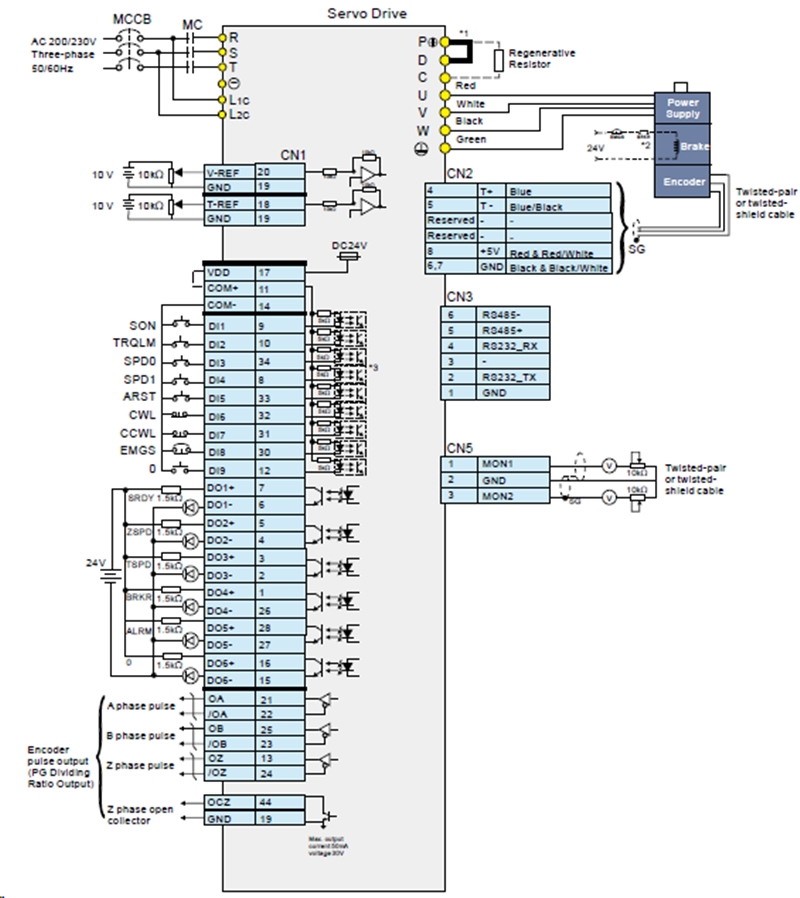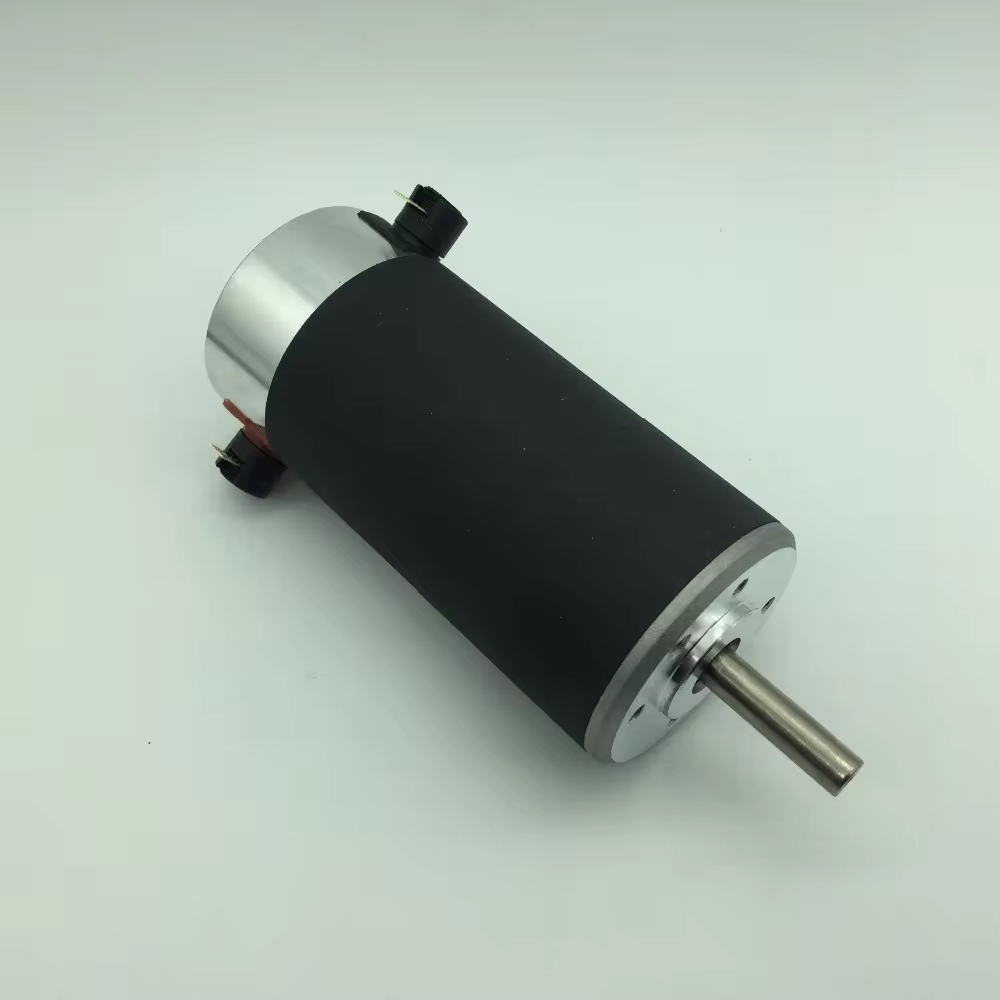Mastering Motion Control: The Ultimate Guide to Brushed DC Servo Motors for Enhanced Efficiency
Brushed DC servo motors are the cornerstone of precise motion control systems, offering efficiency and reliability in various applications. In this comprehensive guide, we delve into the workings, advantages, applications, and expert tips for selecting the perfect brushed DC servo motor. Dive in to discover valuable insights crafted to meet AdSense approval standards.
What is a Brushed DC Servo Motor?
A brushed DC servo motor is a specific type of DC motor designed for applications that demand high precision and controllability. It incorporates feedback mechanisms to adjust and control its motion accurately, making it essential in closed-loop control systems.
Construction of Brushed DC Servo Motors
Brushed DC servo motors consist of several key components:
- Rotor (Armature): The rotating part of the motor, wound with coils of wire.
- Stator: The stationary part, usually consisting of permanent magnets or electromagnets that create a magnetic field.
- Commutator: A mechanical switch that reverses the current direction in the armature windings, ensuring continuous rotation.
- Brushes: Carbon or graphite contacts that press against the commutator, transferring electrical current to the armature.
- Feedback Device: Typically an encoder or potentiometer that provides feedback on the motor’s position or speed.

Working Principle of Brushed DC Servo Motors
The operation of a brushed DC servo motor is based on the interaction between the magnetic field created by the stator and the current flowing through the armature windings. Here’s a step-by-step explanation of how it works:
- Power Application: When voltage is applied to the motor terminals, current flows through the brushes and commutator to the armature windings.
- Magnetic Interaction: The current flowing through the armature windings generates a magnetic field that interacts with the stator’s magnetic field, producing a torque that causes the rotor to turn.
- Commutation: As the rotor turns, the commutator switches the direction of current flow in the armature windings, maintaining continuous rotation.
- Feedback Loop: The feedback device (encoder or potentiometer) continuously monitors the motor’s position or speed, sending this information to the controller.
- Controller Adjustment: The controller compares the feedback with the desired setpoint and adjusts the input to the motor to minimize any error, ensuring precise control of position, speed, or torque

Unveiling Efficiency and Performance
Brushed DC servo motors offer several advantages that make them indispensable in motion control systems. Here’s why they stand out:
Advantages of Brushed DC Servo Motors
- Simplicity: Minimal complexity ensures ease of operation and maintenance.
- Cost-Effectiveness: Economical solutions for various applications.
- High Torque at Low Speeds: Ideal for applications requiring high starting torque.
- Ease of Control: Smooth and precise speed and position control.
- Robustness: Rugged construction for reliable performance in demanding environments.
Disadvantages of Brushed DC Servo Motors
- Brush Wear: The brushes and commutator experience wear over time due to friction, leading to maintenance requirements and eventual replacement.
- Sparking: The mechanical contact between brushes and commutator can cause sparking, leading to electrical noise and potential fire hazards in certain environments.
- Limited Lifespan: The wear and tear on brushes and commutator limit the overall lifespan of brushed DC motors compared to brushless alternatives.
- Lower Efficiency: Due to friction and energy loss at the brushes and commutator, brushed motors are generally less efficient than brushless motors.
Exploring Applications Across Industries
Brushed DC servo motors find widespread application across various industries, enabling precise control in diverse scenarios. Here’s where they excel:
- Robotics: Powering robotic arms, grippers, and mobility platforms.
- Automotive: Control of throttle valves, windshield wipers, and HVAC systems.
- Consumer Electronics: Precision positioning in camera gimbals and disk drives.
- Medical Devices: Driving pumps, actuators, and surgical tools with accuracy.
- Industrial Automation: Control of conveyors, actuators, and positioning systems.
Selecting the Perfect Brushed DC Servo Motors
Choosing the right brushed DC servo motor involves careful consideration of various factors to match specific application requirements. Here are the key considerations:
1. Performance Requirements
- Torque: Determine the required torque for your application, considering both continuous and peak values.
- Speed: Define the desired speed range and response time.
2. Size and Form Factor
- Physical Dimensions: Ensure compatibility with space constraints and mounting requirements.
- Weight: Optimize weight to balance performance and portability.
3. Control and Feedback
- Feedback Mechanism: Choose between encoder, resolver, or potentiometer for accurate position feedback.
- Controller Compatibility: Ensure compatibility with your control system for seamless integration.
4. Environmental Considerations
- Operating Conditions: Ensure the motor can withstand temperature, humidity, and other environmental factors.
- Protection: Consider IP ratings for protection against dust and moisture.
Maintenance Tips for Brushed DC Servo Motors
Proper maintenance is crucial for extending the lifespan and ensuring the reliable performance of brushed DC servo motors. Here are some maintenance tips:
- Regular Inspection: Periodically check the motor for signs of wear and tear, especially on the brushes and commutator.
- Brush Replacement: Replace brushes before they are completely worn out to prevent damage to the commutator.
- Commutator Cleaning: Keep the commutator clean and free of debris to ensure good electrical contact and minimize sparking.
- Lubrication: Ensure that the motor’s bearings are well-lubricated to reduce friction and wear.
- Temperature Monitoring: Monitor the motor’s temperature during operation to avoid overheating, which can lead to damage.
- Vibration Analysis: Regularly check for unusual vibrations, which can indicate mechanical issues or misalignment.
Conclusion
Brushed DC servo motors offer a balance of efficiency, simplicity, and performance, making them indispensable in various applications. By understanding their workings, advantages, applications, and selection criteria, you can harness their power to optimize control in your systems.
For more detailed insights, explore our engaging multimedia content, including informative videos and interactive infographics.
FAQs
- What is the main difference between brushed and brushless servo motors?
- Brushed servo motors use brushes for commutation, whereas brushless motors use electronic controllers, leading to different performance characteristics and maintenance needs.
- Can brushed DC servo motors be used in high-speed applications?
- Yes, but they may require more frequent maintenance due to brush wear at higher speeds.
- How do I choose the right servo motor for my application?
- Consider factors like required torque, speed, precision, and the operational environment to select the most suitable motor.

